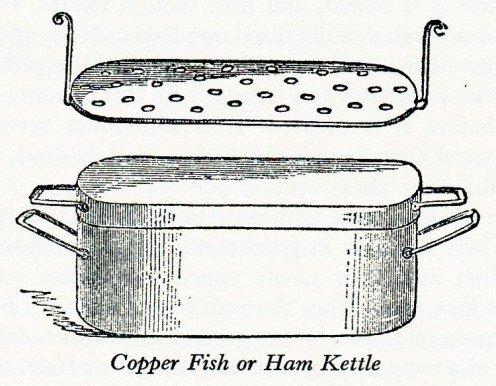
Salty Sam’s Fun Blog for Children
Number 519
The Black Death
Hello Everyone

Last week, l was telling you about pandemics, but l did not have time to talk about probably the most famous illness in history.
lt was of course the Black Death.
Why was it called the Black Death?
Well, it is called that because when people catch it, parts of their body turn black. This happens when the blood supply no longer reaches these parts. The scientific term is necrosis – ‘necro’ relates to death.
There are three different types of plague, one affects the lymph nodes and creates visible swellings under the skin, one is carried in the blood stream and one attacks the lungs.
The proper name for the Black Death is the bubonic plague when it is in the lymph nodes, septicaemic when it goes into the blood stream or in a worse form when it goes into the lungs, the pneumonic plague. lt is often just called the plague.
lt is a highly infectious bacterial infection which killed about 70% of the people who caught it before there was a proper modern cure for it.
When the plague first appeared in Europe, it was very feared, and not properly understood; it was devastating to whole communities and it had long-lasting effects on society.
lt was the one of the most deadliest of diseases in human history.
lt is a truly horrible infection that easily kills people within days. lt causes fever, pain and vomiting and swellings on the body and then causes flesh to turn black.
lt was known of throughout Europe, from ancient times. lt was usually called the pestilence, because it spread quickly; especially through crowded towns and took many people very quickly.
The plague probably originated in Asia and was brought to Europe by travellers and traders.
lt evolved in Asia about 10,000 years ago and did not travel anywhere for thousands of years. But then it travelled along the trading routes coming west and was first recorded in Europe in 541 just as the Roman Empire was in decline.
The first pandemic lasted about 200 years with repeated outbreaks killing up to 50 million people.
Another massive outbreak hit Europe about 700 years later.
Between the years of 1348 and 1350 the first outbreak of the Black Death spread through the country from Europe and reduced the population by more than a third. lt was a terrible blow to many communities.
lt then travelled on to lreland.
The rich and the poor, the good and the bad, all could be hit by the disease.
ln some communities, 90% of the people were lost.
lt was a grim time for all.
The situation at the time was too wretched and developing too rapidly for authorities to be making detailed records of population loss.
Some historians think that maybe half or even more of the population of Europe was lost in these four years especially in crowded cities like London and Paris.
People were panicking – they thought it was the end of the world.
At the time, people did not understand exactly what the disease was or how it spread. They thought perhaps there was something bad in the air.
The plague that swept through Asia, Africa and Europe in the 1300s was thought to have killed about 50 million people.
Because the plague killed so many people, there was a shortage of labourers to work of the land. Any failure of crops due to bad weather would cause famine, which in turn would cause malnutrition, and this would weaken a person’s ability to fight disease.
A law was passed in 1351 that set wages at the level they were before the Black Death outbreak and also prevented labourers from moving to another job to try and get higher wages. This caused outrage and rebellion. (Blog Post 440).
By the 1370s, the population was half what it had been. lt took generations to recover. Some villages were abandoned as the people from them moved to lands that were more fertile. The farms there could be taken over when the inhabitants died.
What happened afterwards was a movement to be called the Renaissance – a rebirth of human thought and understanding.
The Renaissance was born in North ltaly. Communication between people living in the urban areas there was easy. Their ideas could spread rapidly.
The mediaeval ideas about art, science, medicine, politics, religious worship and the way churches were organized were all rethought.
ln the new order of things, people were more valued and had more freedoms under the law. lt was the end of feudalism – a system where people were basically owned by others (a type of slavery). There was parliamentary reform and the rise of the middle classes of merchants and professionals.
Rapid deforestation caused by the need for building slowed.
There was more land in the hands of a greater variety of people – not just a few.
Society had changed, but it was not to be the end of plague outbreaks, however, and there continued to be quite a few other outbreaks of plague up until the 1500s and beyond.
There was to be a major outbreak again in the Tudor Era.
lt was recorded in Turkey in 1661 and came to the ports of Holland in 1663. During this time ships entering London were kept in quarantine at Tilbury in the mouth of the River Thames (which runs through London) before they were allowed into the city docks.
The measures did not keep the disease at bay for long.
lt is thought that the plague was first imported into London in a consignment of cotton delivered to two French weavers in December of 1664. They were the first to die.
ln the months that followed, the disease spread, slowly at first, but by April 1665 it was spreading quickly through the back alleys of the slums around London – slums situated outside the perimeter wall of the City of London.
People were crammed together in small houses.
Contagious diseases were already rife in these poor areas; there were outbreaks of a lung disease called tuberculosis as well as typhus and smallpox from time to time; but the plague was the most dreaded of them all.
There had been 18 major outbreaks of plague in London in the roughly 300 years between 1350 and 1665 but none were as big as this was to be, and the outbreak became known as the Great Plague.
ln June, the London theatres were ordered to close to stop people congregating together in cramped spaces.
The infection was spreading so quickly that people started to flee the city.
The disease continued to spread across the country.
Men in Tudor times who collected corpses on carts smoked clay tobacco pipes in order to purify the air around them and keep infection away. Of course, they were making false assumptions.
People were dying so quickly and in such great numbers, especially in towns that the corpses were carted away to be put in mass burial pits.
The men pulling the carts would call out as the walked the street for people to bring out their dead. The corpses would be taken to large pits called plague pits and these still remain under parks and buildings today.
The theory that the Black Death was caused by bad air is called the miasma theory. The word miasma comes from the Greek word for pollution. People from very early times, through mediaeval and Tudor times, and right up to Victorian times, thought that diseases were held in ‘bad air’ or what they called ‘night air’.
This might have been because they could smell the bad odour of things that were rotting, but not see microscopic bacteria and viruses that actually did cause illnesses.
However, living in clean and sanitary conditions does help stop the spread of diseases. So cleaning up waste is a good idea.
ln mediaeval towns, sewage was dumped in the streets and rivers; dirty water was drawn for the rivers to drink. The Church taught that washing was vain and bad thing. Pigs roamed the streets.
Tudor towns were made up of houses tightly packed together too, and sewage was thrown out of the windows from chamber pots into the street to be cleaned away in the night.
Eventually, the Victorians developed ‘germ theory’ and we understand even more today how germs cause disease.
Bubonic plague is actually spread by infected fleas that live on small animals like rats biting humans and by human fleas and lice too. Rats would carry the disease and when they died their fleas would feed on people instead, but it was also passed from person to person via human fleas and lice that lived in clothing and straw mattresses.
Plague was also probably spread from humans touching body fluids from an infected person and this is how the disease spread over large distances so quickly. People travelled from town to town or even other countries –much more than rats would have done.
Rats travelled on ships that took them from port to port. Once the disease had entered the port, it was much more likely that the disease travelled from human to human rather than from rat to human from then on into the surrounding areas.
The last recorded death from the Great Plague was in 1679.
But it was to emerge again many years later.
There were plague outbreaks in Australia and North America as recently as the early 1900s and millions were killed in the mid 1800s from an outbreak that started in China and travelled to areas in different parts of the world creating hotspots on different continents.
The ports of Cardiff, Glasgow and Liverpool had outbreaks of plague in 1900 but although there were deaths, an epidemic did not follow in Britain because of improved living conditions and good hygiene. The last death from plague in Britain was in Suffolk in 1918.
However, in the years to follow, hundreds of millions of people died from epidemics of cholera, smallpox and tuberculosis.
ln 1894, the plague of the Black Death bacterium was identified and named.
Although we may think of it as a mediaeval disease, the Black Death disease still exists.
There was an outbreak in Madagascar in 1995, 2014 and also as recently as 2017 when around 200 people died of a strain almost identical to the mediaeval plague – scientists discovered.
And cases are reported every year in other places like rural Africa.
There was an outbreak in lnner Mongolia in the summer of 2020.
lronically, by this time the disease was treatable (with antibiotics), while a new disease that had started to spread widely across the world in that year Covid-19 was largely not treatable until towards the end of that year.
The vaccines that were hurriedly produced to prevent Covid-19 causing serious illness took hours to produce and ten months of more work to get ready for roll-out, (ten months rather than the ten years that it usually takes to get a vaccine up and running).
Finding a cure for bubonic plague took about 1,400 years.
lf you like my blog, please support it by telling all your friends and followers about it.
Thank you!
And see you again next Fun Friday!
Love and kisses
Salty Sam

www.christina-sinclair.com


Bill and Bob’s Joke of the Week![]()
![]()
Bob: Was there any good news during the bubonic plague pandemic?
Bill: Well, the crime rate did go down.

Salty Sam © Christina Sinclair 2015
Unauthorized use and/or duplication of material from this blog without express and written permission from this blog’s author and owner is strictly prohibited.
Links may be used to www.christina-sinclair.com

Picture Gallery
 Red spots would turn black
Red spots would turn black
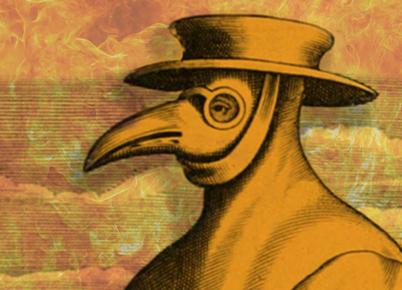 Men used to wear masks that looked like bird’s faces
Men used to wear masks that looked like bird’s faces
They put herbs in the beaks that had scents they could inhale
to try and prevent them getting ill
 A cart collecting the dead
A cart collecting the dead
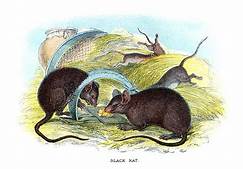 Black rats
Black rats
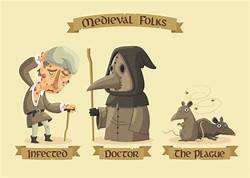
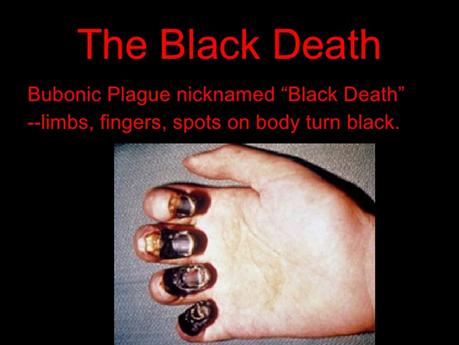


 THE SALTY SAM NEWS DESK
THE SALTY SAM NEWS DESK

This week, I had to hurry over to the Post Office with a rush delivery. The sea was a bit rough I have to say and I was out on the ocean all alone. But I had to get to see Mandy Livers the Post Mistress before it was too late!
So was it a parcel I had to deliver, or an urgent letter?
Neither, actually it was a packet of stamps.
Mandy decided to set out some boxes in the Post Office this January for people to put used stamps collected from their cards in.
She planned to collect stamps from people all over town and send them off to charities which collect them to make money. Each box had a charity name on it and people could choose which charity they wanted to help.
They could post a few of their stamps in each if they wanted to.
Henry wanted to help Mandy because stamp collecting is one of his hobbies. She said that at the end of January when she was ready to send all the stamps off he could help sort them out into British and foreign to help the charities out. Once they were sorted she would pack them up into boxes ready to go into the post.
Once the other children knew what Henry planned to do, they wanted to help too. So I will take all four of them along to the Post Office one Saturday afternoon next month to help out. Many hands make light work.


If you have recycled all your Christmas cards but still have a lot of postage stamps from cards sent to you that you would like to use to help charities, then the following people would love to have them.
You could even set up a box in your classroom at school to collect even more – have a word with your teacher and see what she thinks.
Please make sure that you put enough postage on your packets when you send them off:-
British Hedgehog Preservation Society
BHPS Stamps, 35 Lime Road, SOUTHAM, Warks CV47 1EQ
The Children’s Safety Education Foundation
31 Crofton Avenue, Timperley, Cheshire, WA15 6BZ
The Brittle Bone Society
Mrs M.M. Price, 57 Mount Pleasant, Swansea, West Glamorgan, Wales, SA1 6EQ
The Together Trust (Supporting children with emotional and behavioural difficulties)
Natalie Garside, Together Trust Centre, Schools Hill, Cheadle, SK8 1JE
The CLA (Enables education and recreation in the countryside for disabled and disadvantaged youngsters)
Tahirih McLaren-Brown, CLA Charitable Trust, 16 Belgrave Square, London, SW1X 8PQ
RNLI (Does vital work to save lives at sea)
Stamps c/o Lara, 7 Speedwell, Brixham, Devon, TQ5 9MJ
Bone Cancer Research Trust Stamp Appeal
Please leave 1cm of envelope around the stamps and separate them into British and overseas
20 Bowers Road, Benfleet, Essex, England, SS7 5PZ
THATU (Supporting self-help projects in poorly-resourced South African communities)
THATU SOUTH AFRICA Stamp Appeal
179 Lyham Road, London, SW2 5PY
Retired Greyhound Trust
Park House, Park Terrace, Worcester Park, Surrey KT4 7JZ
Leukaemia and Lymphoma Association
c/o Sue and Bill Colloff, 5 Ashley Road, Forrest Gate, London E7 8PE
Worldwide Veterinary Service
Senior Project Manager, 14 Wimborne Street, Cranborne, Dorset BH21 5PP
![]()
As well as stamps, the following charity can also recycle postcards and foreign currency to help animals:-
Animal SOS Sri Lanka
64 Fair Acres, Prestwood, Great Missenden, Bucks, HP16 0LE
Thank you very much! ![]()

*********************
TO ADVERTISE ON THIS BLOG
PLEASE CONTACT:
christina.sinclair.ads@aol.co.uk
*********************

 Quick Quiz
Quick Quiz
What do these phrases mean?
- it gets my goat
- it is neither fish nor fowl
- to shut the stable door after the horse has bolted
- a very different kettle of fish
- the last straw that breaks the camel’s back
- like a dog in the manger
- like a bear with a sore head
- to beaver away
- it is like herding cats
- as fit as a flea




lt’s the Weekend!

HOW TO MAKE A TOWER BLOCK PENClL CASE
For a long time people have lived closely together, and nowadays, they can live together in very tall buildings too.
Here is an interesting design for a pencil case.
It looks like a tower block.
Don’t use a very light colour for the main piece of knitting, because the item will get a lot of wear and tear.
Join your yarn on each time you make a window.
You can make different colour windows.
The pull cord at the top can be the same colour as the roof colour or a contrasting colour. The top of the pencil case in the photograph is red to give the item a pop of colour.

CASE (KNIT TWO)
Using 4mm knitting needles and brown dk yarn cast on 28 stitches
Knit 2 rows of garter stitch
Knit 60 rows of stocking stitch
Change to red yarn
Knit 2 rows of stocking stitch
Knit 4 rows of garter stitch
Cast off
Crochet 80 chains into a length of yarn
TO MAKE UP
- Using Swiss darning embroider a door and windows onto one or two sides of the pencil case
- The windows frames run over 4 stitches vertically and horizontally
- There are 3 columns between them across the building with 5 columns each side
- There are 4 rows between the bottom and tops of the windows
- Using over-sew stitching and with right sides together sew along bottom and side seams
- Thread the cord into the knitting along the channel at the top of the pencil case and tie the ends together in a knot

Please note that the material on this blog is for personal use and for use in classrooms only.
It is a copyright infringement and, therefore, illegal under international law to sell items made with these patterns.
Use of the toys and projects is at your own risk.
©Christina Sinclair Designs 2015


Quick Quiz Answers
- it gets my goat – it annoys me
- it is neither fish nor fowl – it is something that is difficult to totally identify because it is a bit of one thing and a bit of another
- to shut the stable door after the horse has bolted – to do something when it is too late
- a very different kettle of fish – something that is totally different from another thing
- the last straw that breaks the camel’s back – too much
- like a dog in the manger – someone who wants something they do not want or need in order to deprive someone else from having it
- like a bear with a sore head – someone being irritable
- to beaver away – to work busily
- it is like herding cats – trying to do something that is difficult to achieve and maybe impossible
- as fit as a flea – fit and healthy
